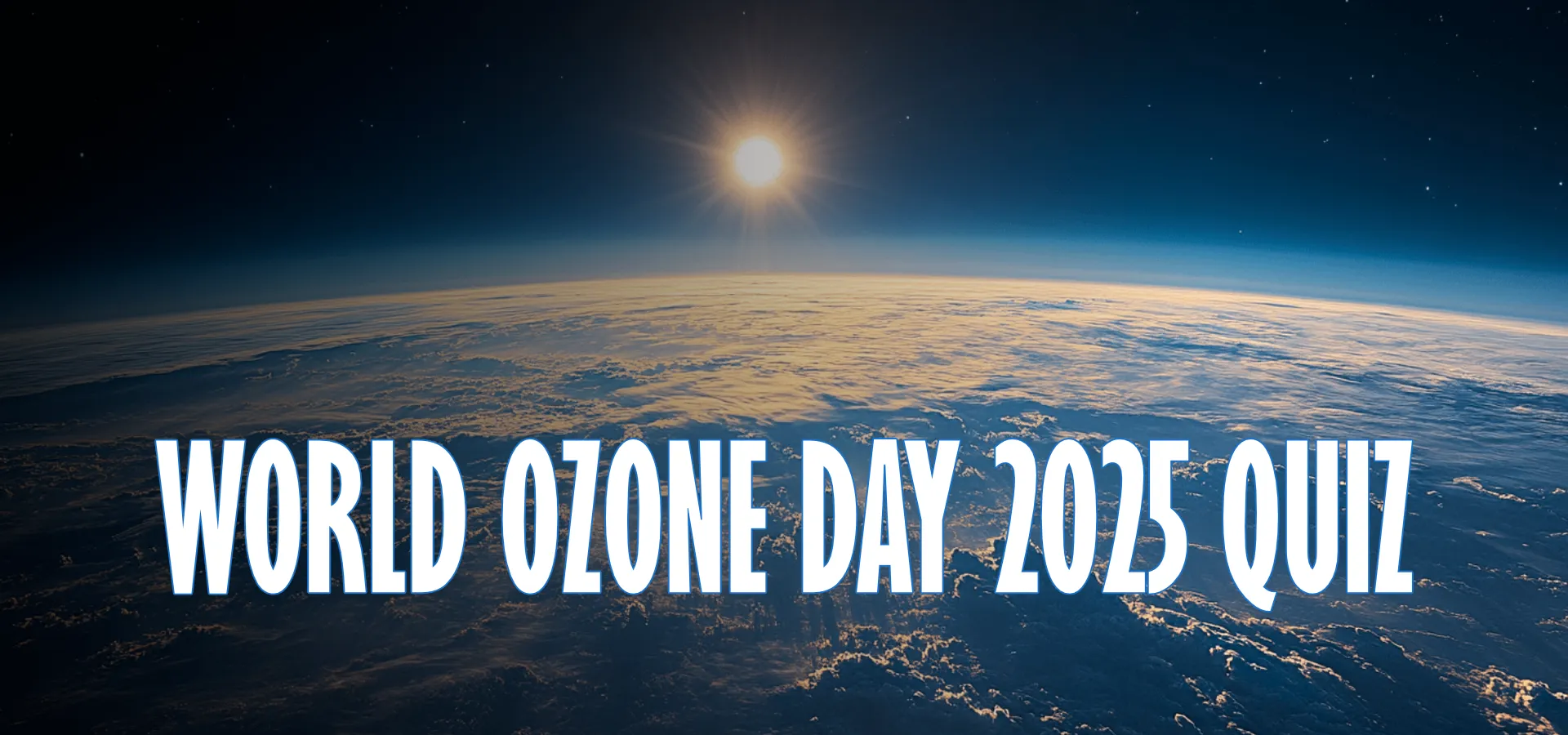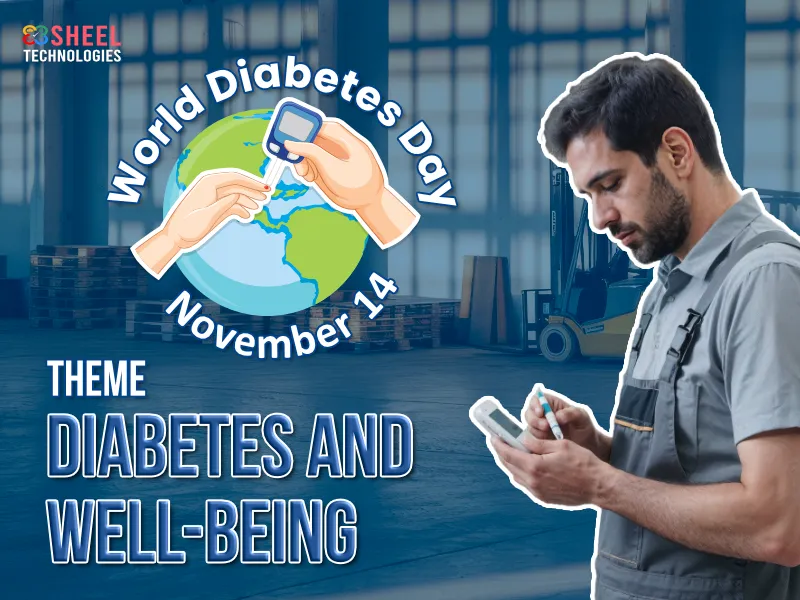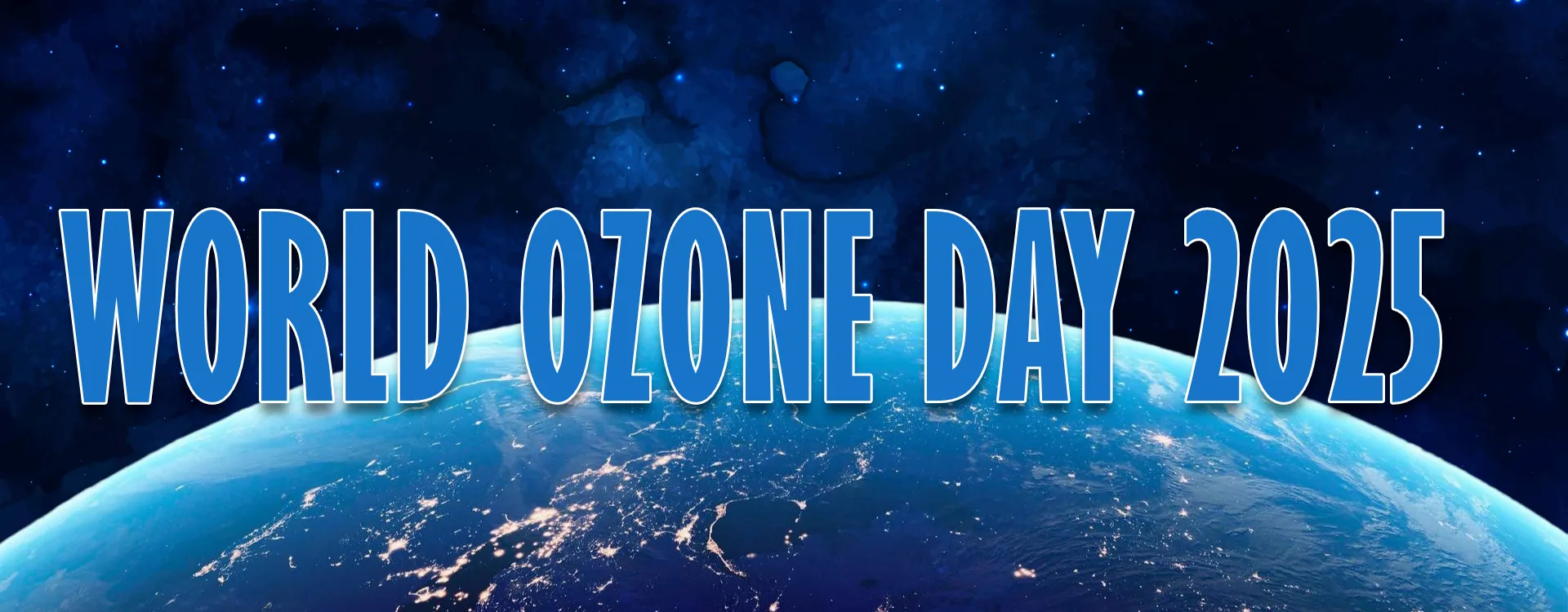
Every year on September 16, the world observes World Ozone Day 2025, a global reminder of the importance of protecting the ozone layer. This invisible shield in the Earth’s stratosphere absorbs most of the harmful ultraviolet rays from the sun, preventing them from reaching the surface. Without it, life on Earth would face severe challenges such as rising cases of skin cancer, cataracts, crop failures, biodiversity loss and long-term damage to oceans and ecosystems. The ozone layer is one of the planet’s most vital protectors and this day urges us to appreciate its role while also reflecting on how far we have come in protecting it.
The discovery of the ozone hole in 1985 above Antarctica was a turning point for environmental awareness. Scientists revealed that human-made chemicals were thinning the ozone layer and the shock of this finding led to urgent global action. This response gave birth to the Montreal Protocol of 1987, one of the most successful international treaties ever signed. Since then, the world has witnessed a gradual but hopeful recovery of the ozone layer. The theme for this year, “From Science to Global Action,” reflects this journey — from scientific discovery to collective global action that has made real progress.
What is the Ozone Layer and Why It Matters?
The ozone layer is a thin but powerful shield made up of ozone (O₃) molecules. Located high in the stratosphere, it blocks around 97–99% of the sun’s ultraviolet radiation. By doing this, it safeguards not only humans but also plants, animals and ecosystems.
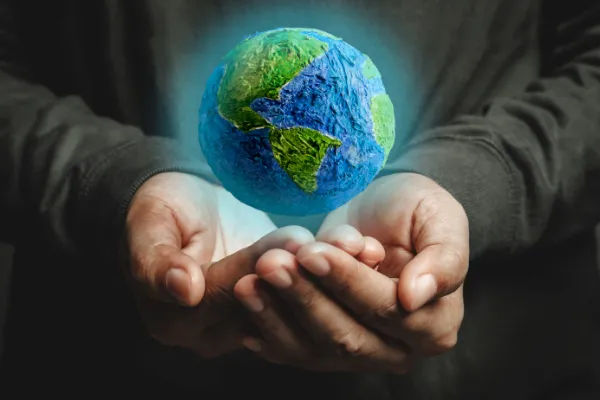
The ozone layer is essential because it:
- Protects humans from skin cancer, eye damage and weakened immune systems.
- Preserves biodiversity by shielding species on land and in water.
- Helps agriculture by protecting crops from harmful UV rays.
- Prolongs the life of materials such as plastics, rubber and paints by slowing UV degradation.
- Maintains balance in the atmosphere, influencing climate and weather patterns.
How the Ozone Layer Was Damaged?
In the 1970s and 1980s, scientists noticed that the ozone layer was thinning in several regions. The most dramatic case was the large ozone hole over Antarctica. The main culprits were ozone-depleting substances (ODSs), chemicals used in everyday products and industries.
Some of the most harmful substances included:
- Chlorofluorocarbons (CFCs): Widely used in air conditioners, refrigerators and aerosol sprays.
- Halons: Chemicals in fire extinguishers.
- Methyl Bromide: A fumigant used in agriculture.
- Carbon Tetrachloride and Methyl Chloroform: Industrial chemicals.
- Nitrous Oxide: Released through agriculture and industrial activities.
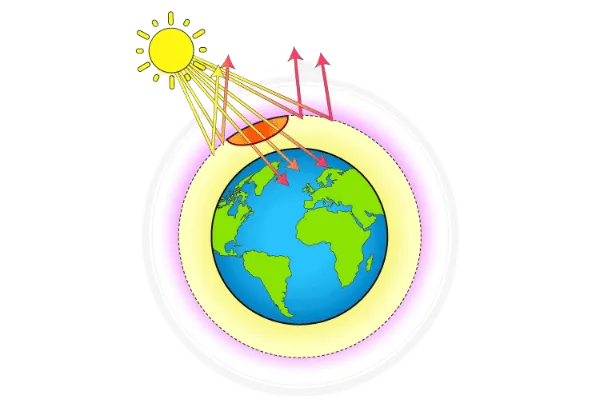
When these chemicals reached the stratosphere, they broke apart under ultraviolet radiation. This process released chlorine and bromine atoms that destroyed ozone molecules at an alarming rate. A single chlorine atom was found to destroy up to 100,000 ozone molecules, which shows how devastating their presence was.
The Montreal Protocol: A Global Success
The signing of the Montreal Protocol in 1987 is one of humanity’s proudest environmental achievements. The treaty required countries to phase out the production and use of ODSs. Governments acted quickly, industries developed alternatives and public awareness grew.
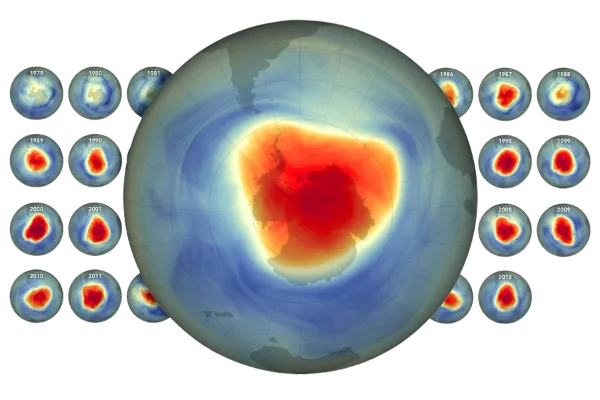
The results have been impressive:
- Nearly 99% of banned ODSs have been eliminated worldwide.
- Scientists report that the ozone layer is healing.
- The ozone hole over Antarctica is shrinking and is projected to close by 2066.
- The Arctic ozone layer may return to pre-1980 levels by 2045, while the rest of the world could recover by 2040.
The Montreal Protocol is often celebrated as proof that when the world unites, even the most serious global challenges can be overcome.
World Ozone Day 2025: From Science to Global Action
The theme for World Ozone Day 2025, “From Science to Global Action,” captures the essence of the ozone protection journey. Science first uncovered the problem by identifying ozone depletion. It then explained the dangers, suggested alternatives and provided data that guided global action. Governments responded by creating treaties, industries innovated with safer products and individuals became more conscious of their choices.
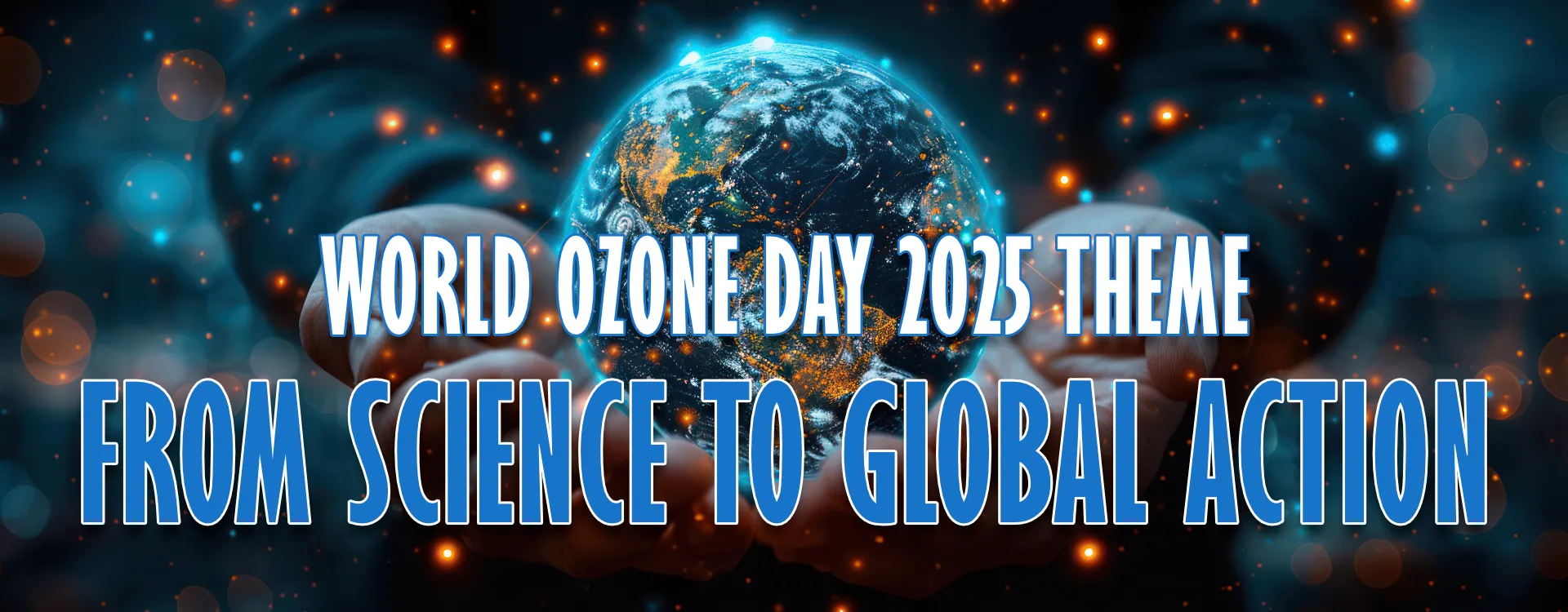
This theme reminds us that science is not only about research in laboratories but also about applying knowledge to real-world issues. Without science, the ozone hole might still be a mystery and without global action, it would still be growing. Together, they show how humanity can respond to environmental challenges.
Health and Environmental Impacts of Ozone Depletion
Ozone depletion has wide-ranging consequences, many of which we still feel today.
On humans, it increases the risk of:
- Skin cancers, rashes and premature aging
- Eye disorders such as cataracts and snow blindness
- Respiratory problems including throat irritation and chest pain
- Weakening of the immune system, leading to more infections
On plants and ecosystems, ozone depletion:
- Reduces photosynthesis and crop yields
- Causes genetic mutations in plants
- Disrupts biodiversity by altering growth patterns
- Harms marine life, especially phytoplankton, which form the foundation of aquatic food chains
Even non-living systems are affected, as materials like plastics and paints degrade more quickly when exposed to stronger ultraviolet radiation. These effects show why protecting the ozone layer is vital for every aspect of life.
Ozone Layer Safety Awareness Videos
India’s Role in Ozone Protection
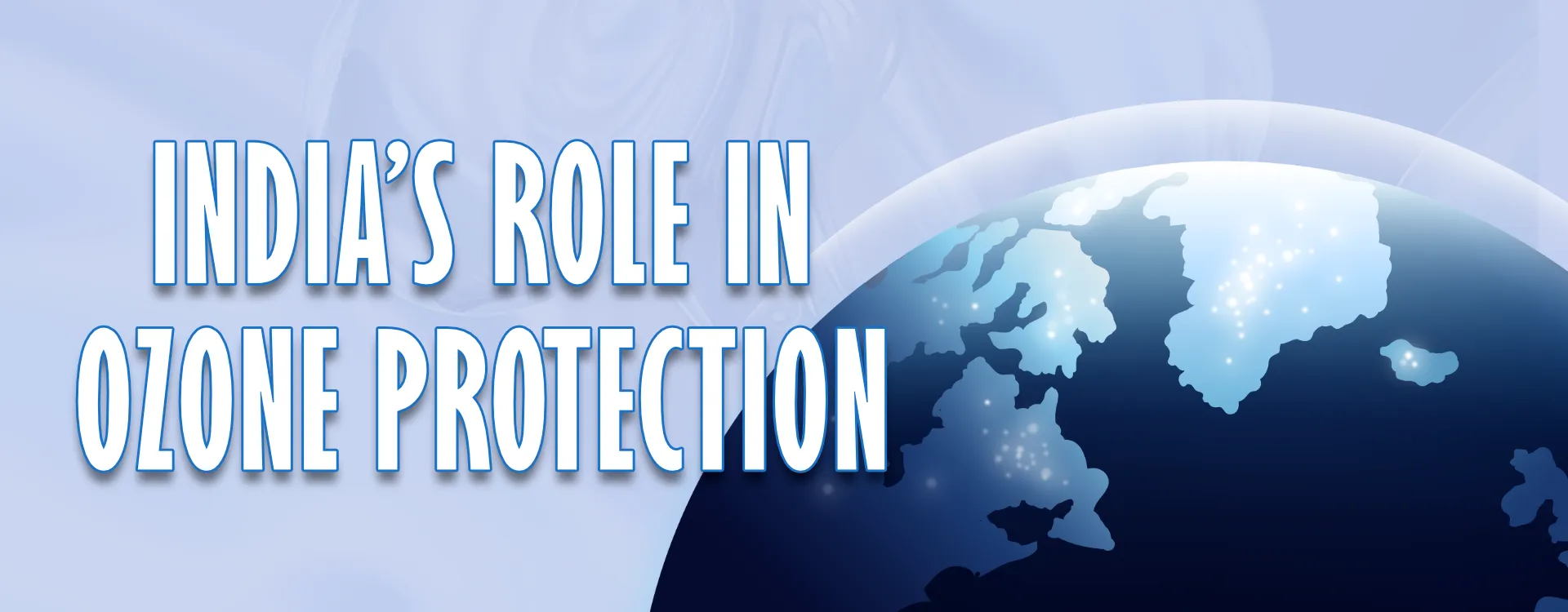
India has made significant contributions to global ozone protection. The country signed the Vienna Convention in 1991 and joined the Montreal Protocol in 1992. Since then, India has phased out the production of CFCs, carbon tetrachloride and halons. In 2021, India ratified the Kigali Amendment, committing to gradually phasing down hydrofluorocarbons (HFCs).
The government has also set up a dedicated Ozone Cell under the Ministry of Environment and Forests to coordinate policies and awareness programs. Industries have shifted toward safer alternatives and many companies now adopt sustainable practices that reduce harm to the environment. India’s commitment shows that even developing countries can take strong environmental actions while pursuing growth.
The Role of Individuals and Industries
Protecting the ozone layer is not only a job for governments and global treaties. Individuals and industries have equally important roles to play.
At the individual level, people can contribute by choosing energy-efficient appliances, servicing air conditioners and refrigerators regularly and disposing of old equipment safely. Reducing car use by walking, cycling or taking public transport also helps. Avoiding harmful pesticides and supporting eco-friendly products are other simple ways to make a difference.
For industries, the responsibility is larger but equally achievable. Businesses can phase out harmful chemicals, adopt safer refrigerants and invest in sustainable technologies. They can also train employees on best practices, monitor refrigerant use and comply with environmental regulations. By innovating with sustainability in mind, industries not only protect the ozone layer but also build long-term trust with consumers.
Education and Awareness
Education is one of the most powerful tools in ozone protection. Schools and colleges can include ozone-related topics in their lessons organize debates and encourage students to observe World Ozone Day 2025 through creative activities like essay writing or poster competitions. Communities can host workshops, exhibitions and public talks to make people more aware of the issue. Workplaces can run training sessions, display awareness posters and promote sustainable practices.
Through education, the knowledge of ozone protection spreads across generations, ensuring that the efforts to heal the ozone layer continue well into the future.
Ozone Protection and Sustainable Development
Protecting the ozone layer contributes to many United Nations Sustainable Development Goals (SDGs). By reducing ultraviolet exposure, it improves health and well-being. By eliminating harmful gases, it supports climate action. By safeguarding crops and marine life, it ensures food security and biodiversity. And by promoting safe production and consumption, it encourages cleaner industries.
Perhaps most importantly, the Montreal Protocol stands as an example of global cooperation, reflecting SDG 17: Partnerships for the Goals. It proves that when countries put aside differences and work together, they can solve even the toughest environmental challenges.
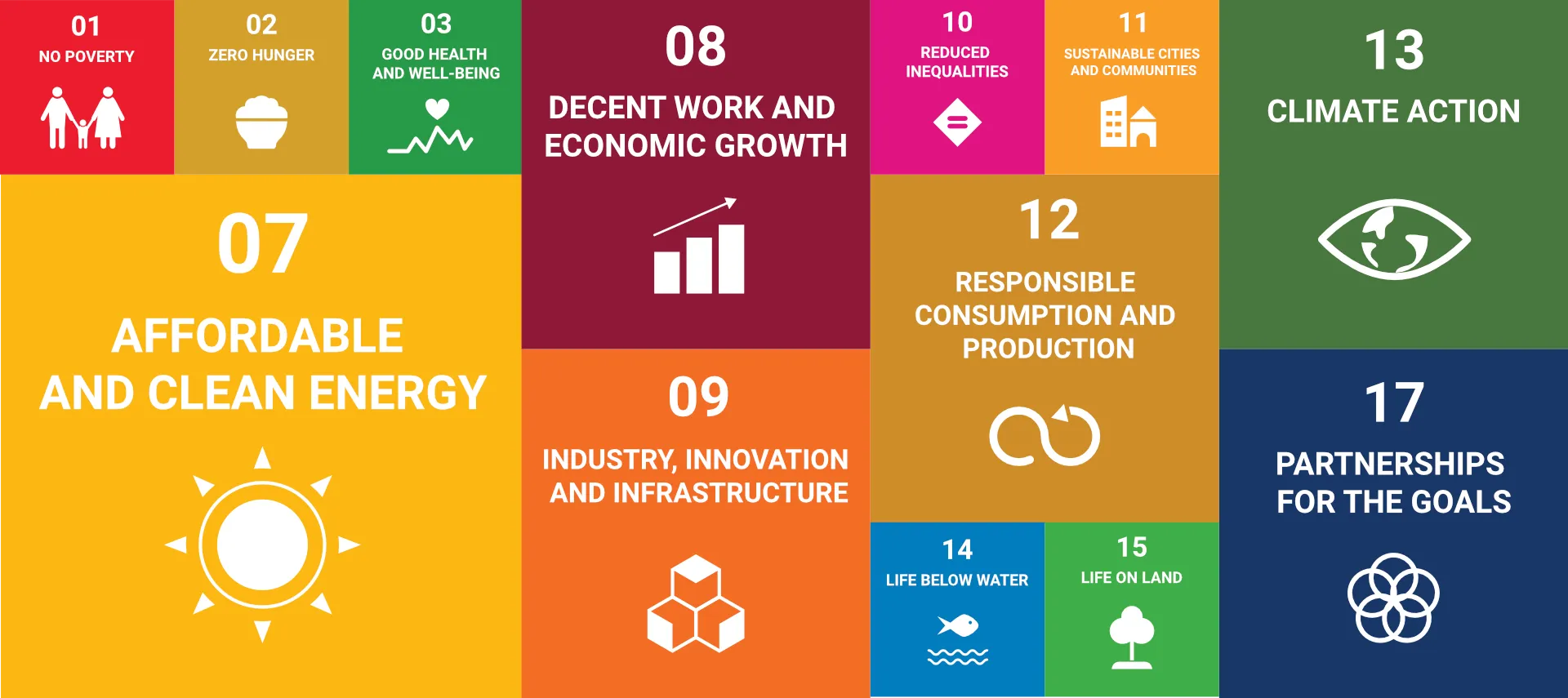
Looking Ahead: A Healing Ozone Layer
Encouragingly, scientific studies show that the ozone layer is healing. If current policies continue, by 2040 global ozone levels could return to where they were in 1980, the Arctic could heal by 2045 and Antarctica could fully recover by 2066. These timelines remind us that healing is a gradual process, but also that progress is real. The fight against ozone depletion is proof that human effort can reverse environmental damage.
Conclusion
World Ozone Day 2025 is both a celebration and a call to action. The theme “From Science to Global Action” highlights how science uncovered the problem, how the world united to respond and how much progress has already been achieved. The ozone layer protects every form of life on Earth and by protecting it, we protect ourselves, our health, our food systems and our future.
On this day, let us remember that solutions to global problems are possible. With cooperation, awareness and determination, we can ensure that the ozone layer continues to recover and that the Earth remains safe for generations to come. Protecting the ozone layer means protecting life itself.
